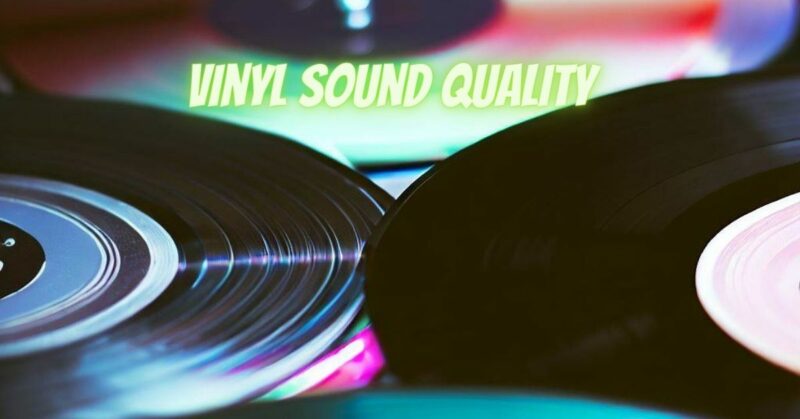In the world of music consumption, vinyl records occupy a cherished place, celebrated not only for their nostalgic charm but also for their unique sound quality. The allure of vinyl lies in its ability to infuse music with warmth, character, and an emotional connection that resonates deeply with audiophiles and music enthusiasts. This article delves into the intricacies of vinyl sound quality, examining the factors that contribute to its distinct sonic tapestry.
1. Analog Warmth and Character:
Vinyl records are renowned for their analog warmth, a quality that stems from the analog nature of the medium itself. The process of engraving sound waves onto vinyl grooves creates subtle harmonic distortions that add depth and richness to the music. This “warmth” is often described as a pleasing imperfection, reminiscent of vintage recordings. It enhances the emotional impact of music, particularly in genres that value expressive vocals and instrument textures.
2. Tactile Engagement:
Vinyl sound quality extends beyond the auditory experience. The tactile engagement with vinyl records, from handling the large album covers to delicately placing the needle on the grooves, fosters a deeper connection with the music. This physical interaction contributes to a more intentional and focused listening experience, setting vinyl apart from digital formats that often facilitate background listening.
3. Dynamic Range and Nuances:
Vinyl’s inherent analog nature allows it to capture a wider dynamic range, encompassing the delicate whispers and powerful crescendos of a performance. The grooves on vinyl faithfully preserve the dynamic shifts and nuances that contribute to the emotional expressiveness of music. This characteristic is especially pronounced in genres like classical, where the dynamic contrast is integral to the composition.
4. Vinyl Artifacts:
While vinyl sound quality is celebrated for its analog charm, it’s important to acknowledge that vinyl records can also introduce certain artifacts. Surface noise, crackles, and pops are part of the vinyl experience, arising from imperfections, dust, and wear. Some listeners embrace these artifacts as part of vinyl’s character, while others find them distracting. The perception of these artifacts depends on personal preference and the level of tolerance for imperfections.
5. Equipment and Setup:
Achieving optimal vinyl sound quality requires high-quality playback equipment and meticulous setup. A high-end turntable, a well-calibrated tonearm, a quality phono cartridge, and suitable amplification are essential components for extracting the best performance from vinyl records. Proper setup minimizes distortions and maximizes fidelity, ensuring that the nuances of the analog recording are faithfully reproduced.
6. Navigating the Vinyl Revival:
As vinyl records experience a resurgence in popularity, advancements in manufacturing and mastering techniques have contributed to improving vinyl sound quality. Audiophile editions, audiophile-grade pressings, and meticulous mastering processes strive to enhance the fidelity of vinyl records. However, it’s important to note that the perception of sound quality is influenced by various factors, including the pressing quality, mastering, and playback equipment used.
Vinyl sound quality is a harmonious blend of emotion and technology. The analog warmth, dynamic range, and tactile engagement of vinyl records contribute to an immersive and emotional listening experience. While vinyl’s imperfections are embraced by some as part of its charm, they are also a reminder of the medium’s unique character. Ultimately, the appeal of vinyl sound quality transcends technical specifications, offering a multi-sensory journey into the heart of music.


